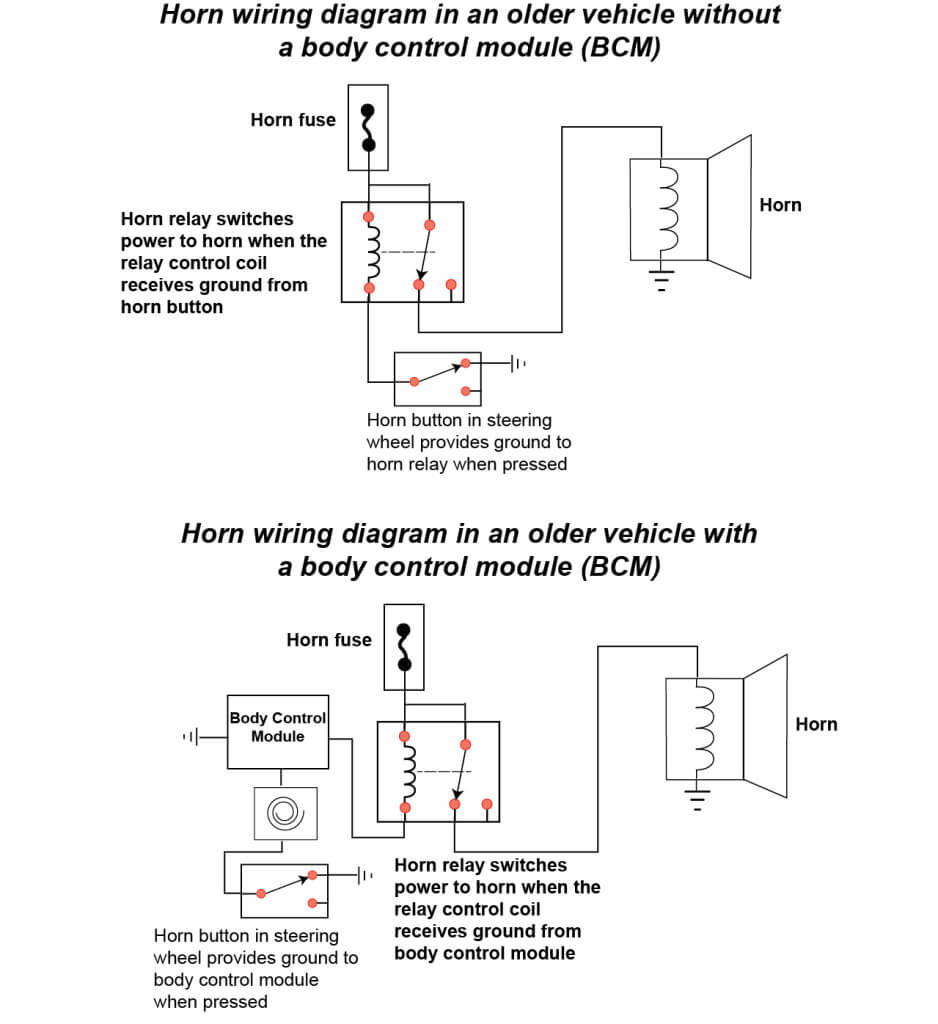When Your Horn Doesn’t Work: Troubleshooting Guide
Learn what to check when your horn doesn’t work
In older vehicles, the horn switch grounds the control coil of the horn relay. Once grounded, the relay switches battery power to the horn. However, in newer vehicles, the horn switch acts as an input to the body control module (BCM), and the BCM provides the ground for the horn relay. Click on the image below to download a PDF of the two most common horn wiring diagrams.
When your horn doesn’t work, check these most common causes
• Horn fuse is blown
• Horn is bad
• Horn relay is bad
• Clockspring is bad
• Horn switch is bad
Steps to diagnose and fix a broken horn
Step 1: Check the horn fuse
Horns are located at the front of the vehicle and are subject to water, road salt, and grit. Over time, those elements can corrode the horn diaphragm or degrade the coil windings that cause the diaphragm to vibrate. That can shorten the power to ground and blow the fuse. If the fuse checks out, move to step 2.
Step 2: Test the electrical connector at the horn to check for battery voltage
Locate the horn and disconnect the electrical connector. Connect one probe of a digital voltmeter to the electrical connector and the other probe to ground. Then press the horn button. You should see battery voltage. If so, the horn button, BCM, TIPM, and relay are working, and you have a bad horn. Confirm by attaching a fused jumper from the battery positive to the horn. If the fuse blows, the horn is toast. If you don’t see battery voltage at the horn connector, the problem could lie in the horn relay, TIPM, BCM, Horn switch, clock spring, or wiring harness. Of all those components, the horn relay has the highest failure rate.
Step 3: Test the horn relay
The easiest way to test a horn relay is to locate another relay in the fuse/relay center with the same part number and swap it in place of the horn relay. Then, operate the horn. If it works, the horn relay was bad. Buy a replacement at an auto parts store or the dealer.
If a replacement relay doesn’t work, test for power and ground in the relay socket.
Using a digital voltmeter, remove the horn relay from its socket. Check the socket terminals for battery power at the relay contacts and control coil (key on). If the control coil and contacts are getting power, next check for the control coil ground when actuating the horn button. If you see ground, then you most likely have a wiring harness issue between the relay socket and the horn.
Step 4: Use a scan tool with live data to check for a horn request signal
If you don’t get ground on the horn relay control coil when pressing the horn button, the problem could be a data bus, BCM, clockspring, horn switch, or wiring harness issue. You’ll need a high-end scan tool to diagnose a data bus problem. And you’ll need a professional-grade wiring diagram to diagnose a wiring harness issue. If you don’t have those, refer this repair to a pro.
©, 2015 Rick Muscoplat
Posted on by Rick Muscoplat
